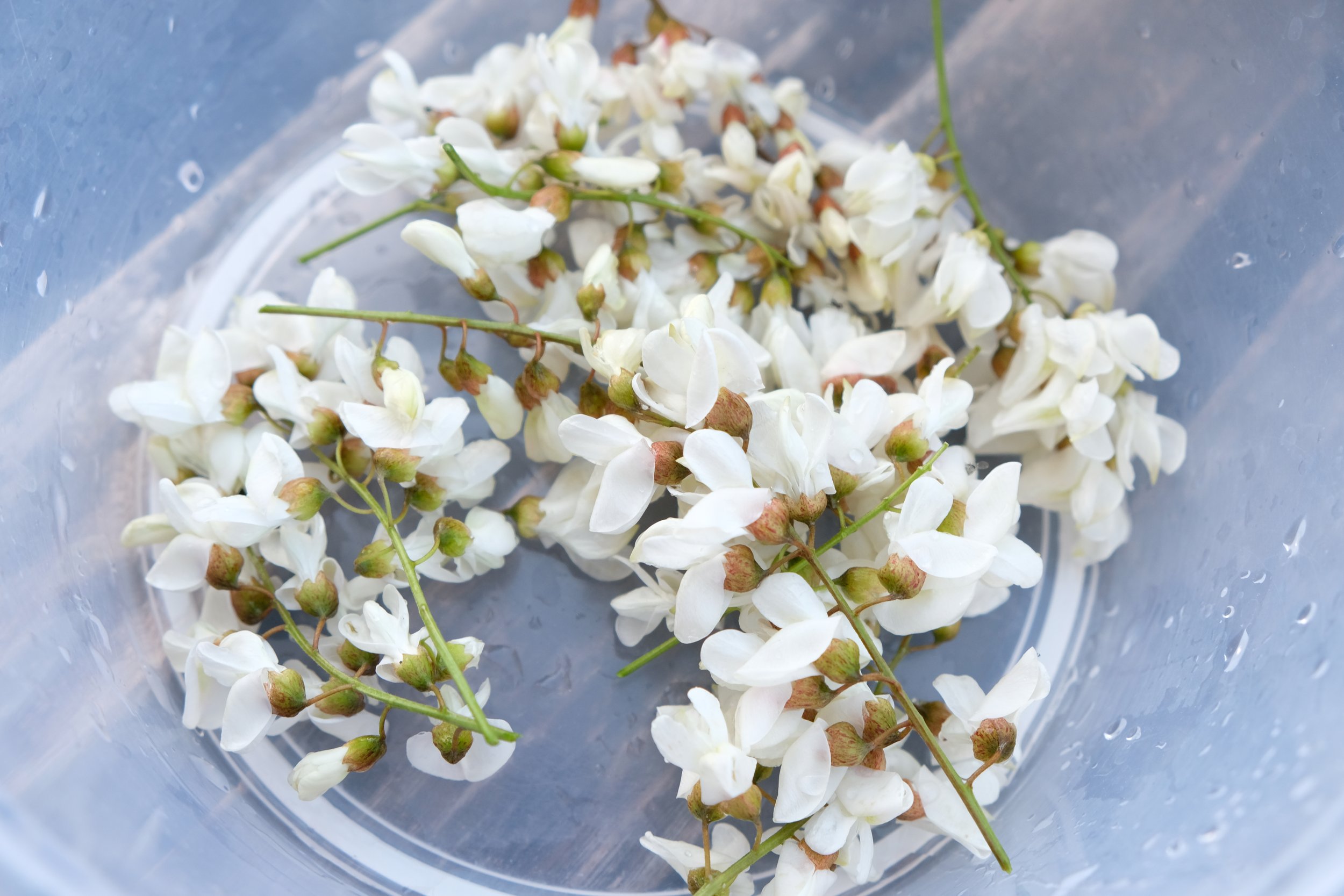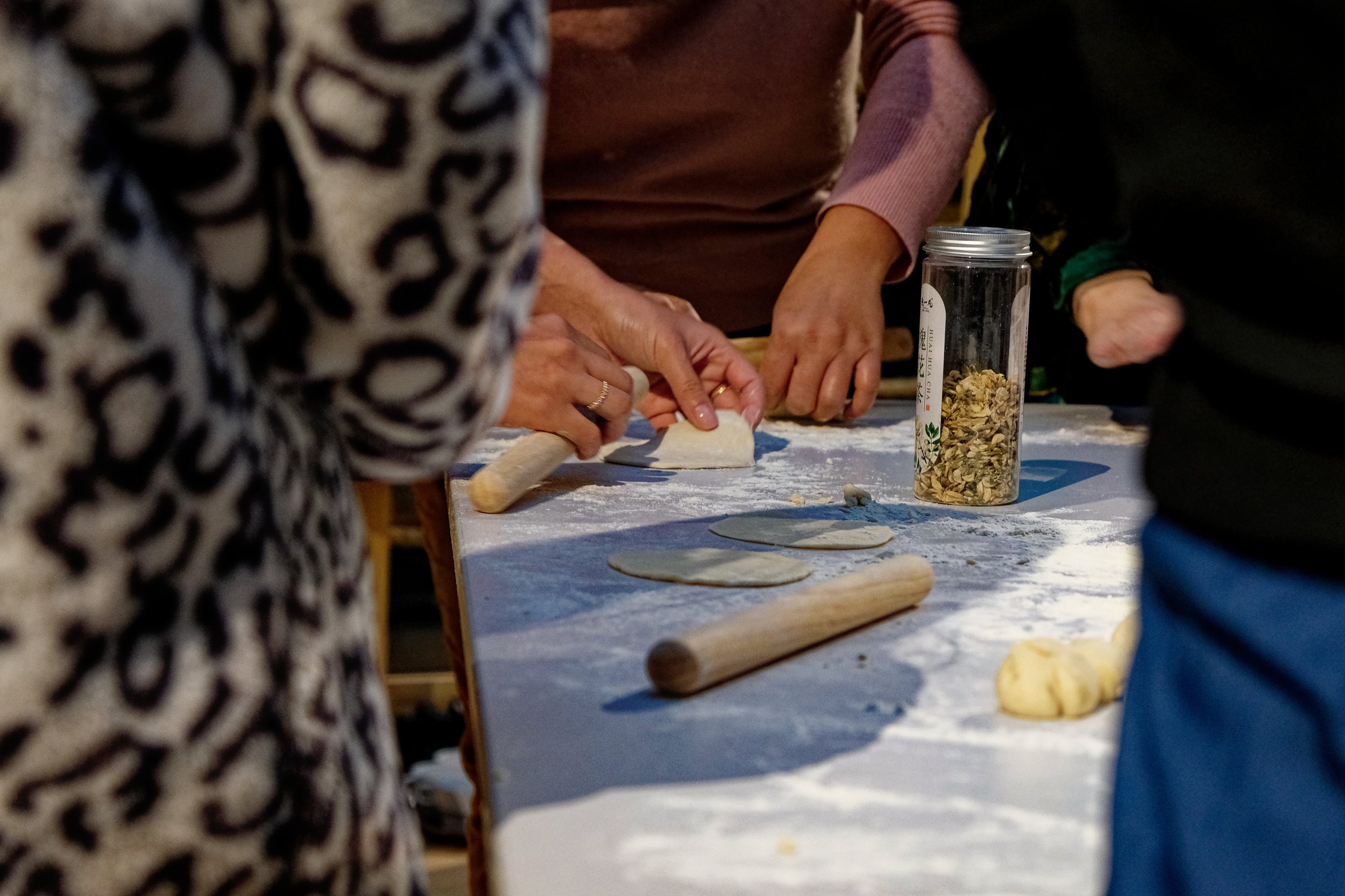© Charlotte Ming
Colonial Translocations of Plants and Taste (2024), Gropius Bau
How has colonialism shaped global ecology and culinary traditions?
In this workshop, Charlotte Ming explored the connections between colonial history, plant migration and food practices. By tracing the journey of the North American tree Robinia, we see how European colonialism played a role in its spread across continents, influencing both ecosystems and culinary practices along the way.
Participants took part in a collaborative process to prepare a northern Chinese recipe. Through this shared experience, we explore the creativity and adaptability of communities that have incorporated new species into their food cultures as a practice of agency, reclamation and healing.






Robinia Baozi recipe
Ingredients for robinia baozi fillings:
200 g fresh Robinia flowers (cleaned and blossoms separated from the stem)
1 bundle glass noodles (mung bean vermicelli), soaked in hot water and chopped
1 small handful wood ear mushrooms (Mù’ěr), soaked in hot water and chopped
100 g chives, finely chopped
1 tsp oyster sauce
1 tsp soy sauce
A pinch of five-spice powder
Salt to taste
1 tsp sesame oil
Mix all the filling ingredients together.
Use store-bought pizza dough.
Divide the dough into 10 round pieces, about the size of your palm. Make each piece a little thicker in the middle.
Put a spoonful of filling in the center of each piece.
Fold the dough over the filling, pleat the edges, and pinch them shut.
Let the buns rest for 15 minutes so they puff up a bit.
Steam the buns over high heat for another 15 minutes, until the dough is soft and fluffy.
©Manuel Winter
©Manuel Winter


